Welcome to the world of call centers, where the customer is always right, except when they're wrong, confused, or speaking in riddles.
Whether you're a seasoned agent or a newbie, you've undoubtedly faced those cringe-worthy moments that make you wish you could hit the mute button on life. From language barriers to technical glitches, join us as we dive into the delightfully awkward and often hilarious situations that call center agents encounter daily—and discover the tips and tricks to gracefully handle them without losing your cool (or your sanity).
Types of Awkward Situations in the Call Center
1. Language Barriers
Language barriers stand as a significant source of awkwardness in call centers that serve a global clientele. When customers and agents do not share the same native language, miscommunications are frequent, leading to confusion and frustration on both ends. This could involve mishearing or misinterpreting phrases, which often results in providing incorrect information or solving the wrong problem entirely.
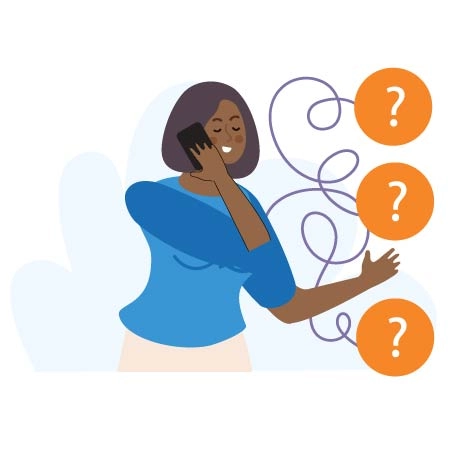
For example, an agent may struggle to understand a customer who speaks little of the language the call center operates in. The conversation may be filled with misunderstandings and confusion, making it difficult to resolve the issue.
2. Personal Information Requests
Requesting personal information from customers is a routine part of verifying their identity over the phone. However, this can become awkward, particularly when customers feel uncomfortable divulging sensitive details or misunderstand the reasons behind the request. Establishing trust in these interactions is crucial but can sometimes be challenging and awkward to navigate.
For example, a customer may demand that the agent provide personal information about another account holder, which the agent is legally prohibited from sharing. The customer may become increasingly irate when their request is denied.
3. Technical Difficulties
Technical glitches during calls, such as dropped connections or poor sound quality, disrupt communications and lead to awkward pauses and repeated conversations. These issues often frustrate customers and put agents in difficult positions as they manage the situation without direct control over technical resources.
For example, during a critical part of the conversation, the call may be dropped, or there may be a significant lag and echo. The customer may become frustrated and accuse the agent of incompetence, even though the issue is with the technology.
4. Emotional Customers
Handling calls from emotional or distressed customers can result in particularly awkward encounters for call center agents. Managing to stay professional while providing comfort or solutions to customers who may be angry, sad, or disappointed is a delicate balance that can easily lead to uncomfortable moments.
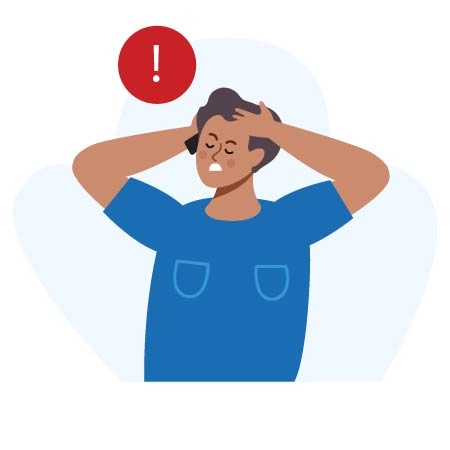
For example, a customer may call in a highly emotional state, either extremely angry, crying, or panicking. The agent must remain calm and professional while trying to empathize with and assist the customer without escalating the situation further.
5. Product/Service Knowledge Gaps
When call center agents lack full knowledge about a product or service, awkward pauses during the conversation can occur, as they might need to look up information or ask for assistance. This can diminish the customer's confidence in the agent’s expertise and the company as a whole.
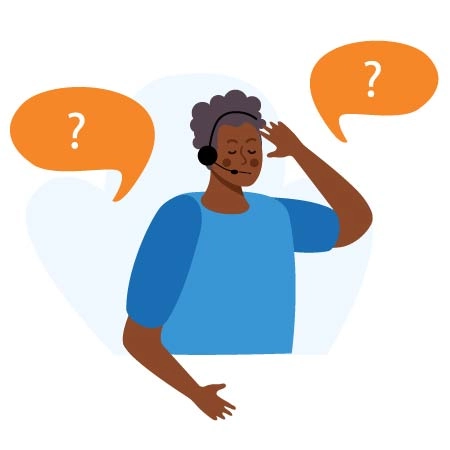
For example, an agent may be asked a very specific question about a product or service they are unfamiliar with. The agent may try to look up the information quickly, but the customer may grow impatient and question the agent’s competence.
6. Complaint Escalation
Escalating a complaint to a higher authority can be awkward, especially if the customer perceives it as a refusal to help or an admission of incapability. The interaction may become strained, making the experience unpleasant for both the customer and the agent.

For example, a customer might demand to speak to a supervisor immediately without explaining the issue. The agent might know the wait time for a supervisor is long, which might worsen the customer’s frustration.
7. Inappropriate Behavior
Encounters with customers who display inappropriate behavior, such as making personal comments or using offensive language, are particularly difficult and awkward for agents to handle. These situations require a high level of professionalism and often assistance from higher management.
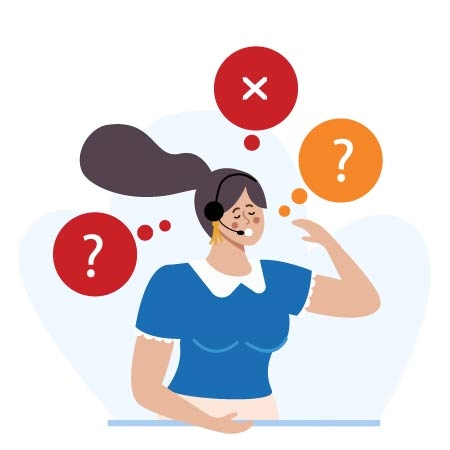
For example, a customer makes inappropriate comments or jokes that make the agent uncomfortable. The agent must find a way to remain professional and steer the conversation back to the business at hand without offending the customer.
8. Billing Disputes
Billing disputes often involve high stakes and emotions, leading to awkward exchanges when customers feel they are being incorrectly charged and demand immediate corrections and explanations. Such situations require careful navigation to maintain composure and customer relations.
For example: A customer disputes a charge on their bill, insisting it is an error. After reviewing the account, the agent finds the charge legitimate, but the customer refuses to accept this and accuses the company of fraud.
9. Silent Calls
Receiving silent calls where the caller does not respond can be eerie and awkward for agents, creating uncertainty in how to proceed. These can range from accidental calls to more troubling scenarios where the silence is intentional.

For example, the agent answers a call, but there is no response from the other end. The silence continues despite the agent’s attempts to engage, making it unclear whether the call should be terminated or held longer.
10. Policy Limitations
Explaining policy limitations that prevent fulfilling a customer’s request can result in awkward interactions. It’s challenging to maintain a positive customer interaction when conveying messages that customers don’t want to hear.
For example, a customer may request a refund or service change that company policy does not allow. The customer may become increasingly upset as the agent tries to explain the policy and offer alternative solutions.
11. Language Misunderstandings
Differences in dialects or jargon can lead to awkward misunderstandings. Such scenarios require patience and repeated clarification, which can test the patience of both the customer and the agent.
For example, a non-native speaker uses a phrase or word incorrectly, leading to a misunderstanding that changes the direction of the conversation. Correcting the misunderstanding without embarrassing the customer can be tricky.
12. Extended Holds
Placing customers on hold for extended periods can lead to tension and awkwardness, especially if the wait time is much longer than anticipated. This often results in having to apologize and regain the customer's goodwill.
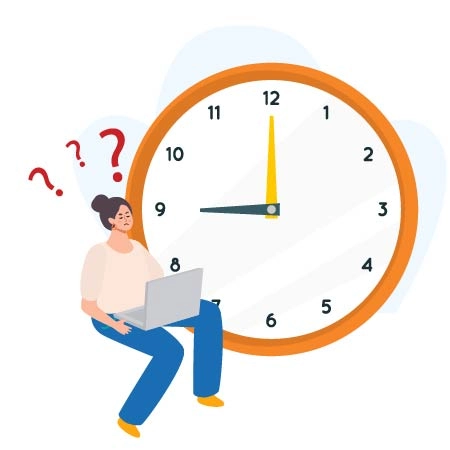
For example, the agent needs to place the customer on hold for an extended period to obtain the necessary information. The long wait time can make the customer impatient and irritated.
13. Mistaken Identity
Awkward situations arise when an agent confuses one customer for another, perhaps discussing details relevant to a different person’s account. Such errors can compromise customer trust and satisfaction.
For example, an agent may address the customer by the wrong name or misgender them, leading to an awkward correction and potential offense.
14. Repeated Issues
When customers call repeatedly about the same issue that hasn’t been resolved, the interactions can become progressively more awkward and strained. Both the customer and the agent can feel exasperated, making the resolution process challenging.
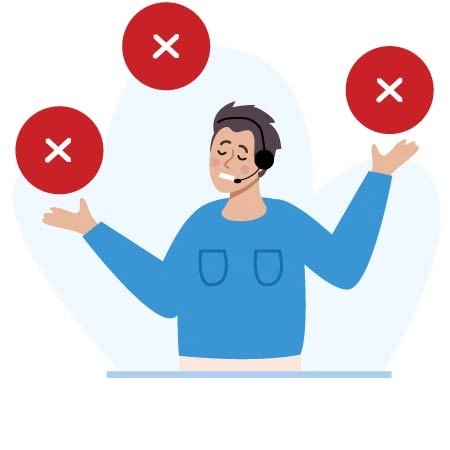
For example, a customer may call multiple times about the same unresolved issue, becoming increasingly angry with each call. The agent must review the case history and try to provide a solution without further escalating the customer’s frustration.
How to Handle Awkward Situations in the Call Center
Navigating the challenges posed by difficult calls in the call center environment requires adept communication strategies. Agents must manage not only the content of their conversations but also their delivery, ensuring that each interaction remains productive and resolved to the satisfaction of both the customer and the company. Implementing effective communication techniques can significantly reduce the occurrence of awkward situations.
- Good Communication Skills: Mastering the art of communication is vital in effectively managing awkward situations. Clarity in speaking, active listening, and tactful phrasing can alleviate misunderstandings and tension. Training agents to communicate clearly and effectively is crucial.
- Empathy and Patience: Empathy involves understanding and acknowledging a customer's feelings and perspectives, which can greatly diffuse awkward situations. Coupled with patience, empathy helps maintain a calm and accommodating demeanor even in challenging interactions.
- Thorough Understanding of Company Policies and Procedures: Agents with a comprehensive understanding of company policies and procedures can navigate awkward situations more confidently and efficiently. This knowledge empowers them to provide accurate information and manage expectations realistically.
- Providing Solutions Calmly: When faced with an awkward situation, remaining calm and offering solutions thoughtfully can turn a potentially negative experience into a positive one. Structured problem-solving skills and the capacity to remain poised under pressure are essential qualities in effective call center agents.
- Remaining Professional: Maintaining professionalism is paramount in effectively managing awkward situations during calls. It is essential that every call center agent adheres to the highest standards of professional conduct, irrespective of the provocations or challenges presented by the caller. This includes:
- Using a calm, steady tone of voice.
- Remaining courteous and respectful, regardless of the customer’s attitude.
- Avoid overly casual language and slang, which may not be well-received.
- Listening actively to understand the caller’s problem fully before responding.
- Taking Breaks When Necessary: One often overlooked aspect of managing stressful and awkward interactions is the call center agents' well-being. Continuously dealing with high-tension situations can lead to mental and emotional fatigue, which may, in turn, compromise the quality of service. Call centers should encourage agents to take short, regular breaks, especially after a particularly tough call, to:
- Clear their minds and reset their emotional state.
- Review the conversation and reflect on what went well and what could be improved.
- Prevent burnout and maintain high levels of professional performance.
Implementing structured break schedules and providing a supportive environment where agents feel comfortable requesting a pause when needed is crucial for maintaining an effective team capable of managing customer service challenges.
